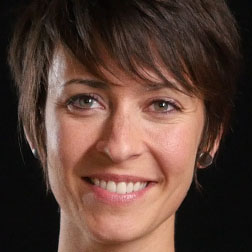“I didn´t like what you did – it felt wrong.”
“We are disappointed about the result of the group process – this wasn´t what we expected.”
These are actual quotes from my clients. This was not the dream feedback for me as a proud, skilled facilitator! The fire alarm in my brain went on with a loud noise, my body froze, and my ego-mind automatically started creating explanations that would make me look better and make the pain and shame go away. Without any effort I had created lots of defensive and aggressive arguments about the logic of my actions and why everybody and everything else also were to blame (even my family and the food I ate the night before).
Then I remembered my anchor, my higher intention as a facilitator: “I am expanding to welcome what is”.
Obviously, I did not in this very moment welcome failure, but rejected the reality in the here and now. I have learned to recognize that when I am too busy with good/bad, like/dislike, yes/no, my bodymind is not in the present moment. I know from experience that my body and nervous system need to soothe and metabolize the feelings and contractions, or else I won’t be able to receive the wisdom and be responsive to the situation and the group.
So I came back to my practice. Noticing breath. Being with sound, smell, bodily sensations in the present moment. When my mind started running wild with re-playing the painful story over and over again and then imagining future scenarios of me being laughed at and never being hired again and going bankrupt…I would STOP! Notice my breath. Bring my attention to the present moment. Let go of idealized self-identity and face death of how-it-should-be. And slowly let the wisdom emerge from the uncomfortable not-knowing.
But why is it important that I do my practice and embrace and welcome failure, instead of just thinking “shit happens” and go on with my next client?
My teacher Diane Musho Hamilton has explained it this way:
“My Zen teacher, Genpo Roshi, once told me a long time ago, “You can’t work with a voice that comes up in the room if you don’t know that same voice in yourself.”
What Roshi meant is that anytime you are facilitating a group of people in a dialogue or group process, and a participant expresses a thought, a feeling, a perspective or “voice,” you as the facilitator need to quickly locate that same experience in your own interior awareness; that is, if you want to remain present, congruent, and trustable in front of the room.”
In these complex times, the voice of failure is an important voice to be able to know and facilitate in groups and organizations. A high degree of complexity and change frequency makes us suspicious about relying on past experiences, best practices, and well-thought-out plans.
In the spirit of adaptation, we are encouraged to experiment, innovate and be willing to fall into unknown landscapes with no security net. We hear this a lot with ideas like “fail early, fail often” or “iterate, iterate, iterate.”
Yet the hidden price of frequent innovation is more frequent experiences of failure.
How can I support groups to expand their tolerance for the uncomfortable feeling of not knowing and to be failing, if I myself resent being with it?
There’s a deep paradox at the heart of this question. If we truly want to experiment, innovate, and create in the unknown, the surest place to act from (paradoxically) is a place where we experience that failure and success are the same thing. As a facilitator, if I aim to support my clients to “go here,” yet I cannot experience failure fully myself, I will not be able to transmit in a congruent and believable way what it is to experience success and failure as one thing. In other words, I will not be able to be an instrument of what is most needed for my clients. Not tomorrow, and not someday, but right now when we are in the room together. I will simply fall short, because I am not willing to experience the fullness of failure in myself.
When I received this painful feedback from my clients, in both situations I had time before the follow-up meeting to digest, surrender, expand and welcome the experience. I opened up to my un-perfectness, stopped explaining, and received their truth. From that place I could respond in a way that made us talk about my failure in a generative way, bringing it into our work together instead of making it separate.
My deep acceptance of “yes, I failed you, I hurt you, I disappointed you” helped us explore how my imperfection serves as a support to their work. And for me the fall from the pedestal also elicited a human feeling of oneness, offering a more playful and light position than that of a perfect expert. To be witnessed by a client as being fully in failure is deeper experience than I could imagine. The fact that they had the courage to give me this feedback and that I publicly accepted the “death” of my preferred self-identity is still working me deeply and transforming my way of defining myself as a consultant, teacher, mother, friend and human being.
The brave feedback from my clients has made me listen to the calling. A call for us as facilitators, leaders, conveners and coaches to be even more brave. To embody and transmit the discomfort of the not-knowing that is so called for in our communities. To avoid standing securely in our nice business suits and show power points presenting the importance of THEM to be in the unknown and risk to fail. While we risk less or nothing.
For me there is still so much to explore in the flex-flow between failure and success, and truly believing that I and we are loved either way. And I still have to figure out how to find those clients that want to hire me to succeed in failure and practice this skill with them :-D.
To show how in the divided mind of two failure and success don’t at all feel the same, I’ve created an example of a polarity matrix below. A polarity matrix is an excellent tool to help expand the cognitive trap of binary either / or, where we compare an upside of one thing to a downside of another—in my case, the downside of failure was up against the upside of success. To make these polarities flow more freely we need to practice the mind of one, and a polarity matrix can be a very helpful tool.
I hope my story inspires you to head into the scary territory of succeeding in failure. You’re not alone.
| UPSIDES + | DOWNSIDES – | |
| FAILURE | Access to: Humility, curiosity of what is next, knowing not-knowing, learning mode, wiser than before, openness, freedom, embracing humanness, having fun/playing, laughing at yourself, lightness to life | Activating fear and shadow: Shame, embarrassment, losing position and respect, death of success, outcast in community, humiliation, not good enough, hopelessness, never again |
| SUCCESS | Access to: Sense of worth, pride, ability, accomplishment, goal-orientation, Yes – I/we can, hope, faith, trust, courage to try again, getting there, getting status in a group, being an expert | Activating craving and shadow:
Arrogance, feeling better than, not seeing pitfalls, clinging to comfort and perfection, getting worth from performance instead of being, giving up/end of story/finish, nothing more to develop and accomplish, flat energy |
“I’ve missed more than 9000 shots in my career. I’ve lost almost 300 games. 26 times, I’ve been trusted to take the game winning shot and missed. I’ve failed over and over and over again in my life. And that is why I succeed.” ― Michael Jordan
Nina Jensen is a specialist and supervisor in workplace and organizational psychology in Denmark. She has been leading team development and leadership training in organizations for over 20 years. In 2016, she graduated as a Certified Integral Facilitator with Ten Directions.




3 thoughts on “How to Succeed Fully in Failure”
Nina, brilliant article. Thank you for your courageous insights
Thank you for your feedback, Graham. It helps my courage for future writings, that it lands.
Good luck with your failures :-D.
Thanks for your feedback, Graham! It helps me to know, that you found it useful.